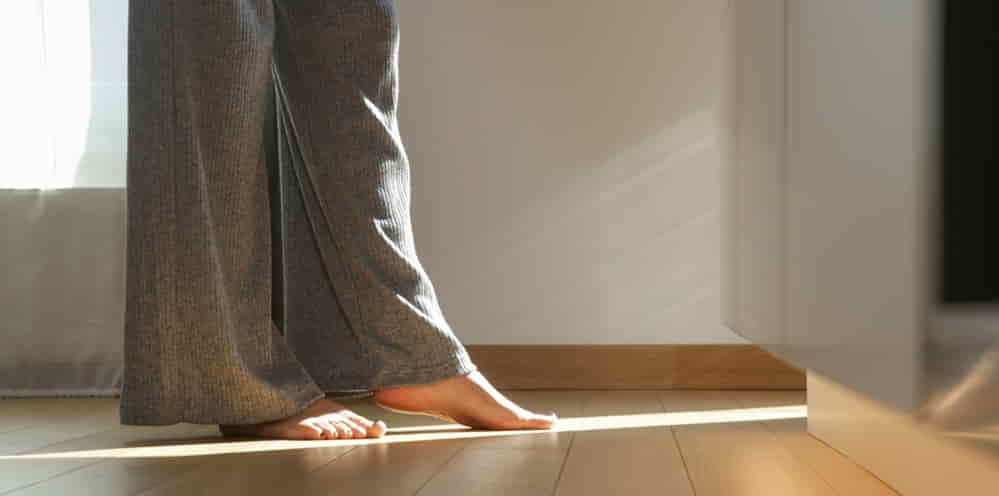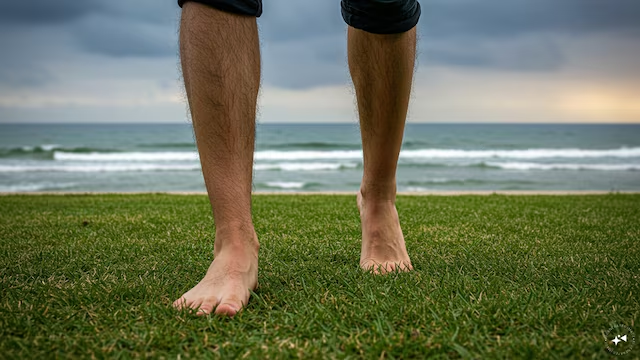
Modern life often keeps us disconnected—from nature, from our senses, and even from our own bodies. But one simple, primal act is gaining popularity among wellness seekers and researchers alike: walking barefoot outdoors. This practice, often referred to as earthing or grounding, taps into the electrical energy of the Earth to deliver surprising physical and psychological health benefits.
Whether it’s strolling barefoot in your backyard, on a beach, or through a forest path, the benefits of walking barefoot outside go far beyond nostalgia or comfort. Emerging research suggests it may reduce inflammation, improve sleep, enhance balance, and even regulate stress levels. In this guide, we explore the science, traditions, and practical reasons to embrace this natural connection.
The Science Behind Grounding
To understand the benefits of walking barefoot outside, we need to grasp how our bodies interact with Earth’s energy. The Earth carries a negative electric charge, and when we come into direct contact with it—without the insulating barrier of shoes—our bodies absorb free electrons.
These electrons may serve as natural antioxidants, neutralizing harmful free radicals that contribute to inflammation and chronic diseases. According to a review in the Journal of Environmental and Public Health, grounding has been associated with reduced pain, improved sleep, and even faster wound healing (source).
1. Reduces Inflammation and Chronic Pain
Many people who walk barefoot regularly report a noticeable reduction in joint pain, muscle aches, or chronic conditions like arthritis. A 2015 pilot study found that participants who grounded themselves for one hour daily experienced decreased levels of inflammatory markers in their blood.
Researchers believe this may be due to:
-
The neutralization of free radicals by Earth’s electrons
-
A decrease in cortisol levels (the body’s stress hormone)
-
Better circulation and blood flow
Whether walking barefoot in the grass or on moist soil, this simple act may provide a natural anti-inflammatory effect.
2. Enhances Sleep Quality
Among the most intriguing benefits of walking barefoot outside is its potential impact on circadian rhythms. In our artificial-light-saturated world, many people struggle with sleep disorders.
Grounding has been shown to:
-
Normalize day/night cortisol levels
-
Improve melatonin production
-
Help realign the internal biological clock
Clinical trials suggest that earthing for just 30 minutes a day can significantly improve sleep onset and sleep quality, especially in individuals with insomnia. If you suffer from restlessness or fatigue, a barefoot walk on natural ground might be a simple, drug-free solution.
3. Boosts Mental Clarity and Lowers Stress
Walking barefoot outside is also a powerful tool for calming the nervous system. The direct contact with the Earth may help:
-
Activate the parasympathetic (“rest and digest”) system
-
Reduce overactivity in the amygdala, the brain’s fear center
-
Elevate mood-enhancing neurotransmitters like serotonin
A study published in Psychological Reports showed that grounded individuals had significantly lower stress levels compared to non-grounded controls (source). For those facing chronic anxiety, digital burnout, or even emotional fatigue, barefoot walking can act as a grounding technique—literally and figuratively.
4. Improves Balance and Posture
Shoes, especially those with thick soles or high heels, change the way we walk. Over time, they can weaken foot muscles and alter posture. Walking barefoot helps re-engage the small stabilizing muscles in your feet and ankles.
Benefits include:
-
Increased proprioception (awareness of your body in space)
-
Strengthened foot arches and ankle joints
-
Improved overall posture and spine alignment
This is especially valuable for older adults or those recovering from injuries. Physical therapists often recommend barefoot exercises to improve balance, gait, and coordination.
5. Strengthens the Immune System
Connecting directly with the Earth may support immune function in several indirect but meaningful ways:
-
Reduces inflammation, which is the root of many chronic diseases
-
Improves sleep, essential for cellular repair
-
Lowers stress, which suppresses immune response
Researchers believe that consistent grounding can enhance white blood cell response, improve wound healing, and even mitigate allergic reactions. Though more studies are needed, the early evidence points toward barefoot walking as a complementary immune booster.
6. Encourages Mindfulness and Connection to Nature
In our fast-paced world, mindfulness is often an elusive goal. Walking barefoot outside instantly brings your awareness to the present moment:
-
You feel the texture of soil, grass, sand, or stone
-
You hear birds, rustling leaves, and distant wind
-
You breathe in the scents of nature
This sensorial richness enhances mood, encourages mindfulness, and fosters a deeper connection to the planet. As the Japanese practice of Shinrin-yoku (forest bathing) has shown, such nature immersion has measurable psychological benefits.
7. Economical and Accessible Wellness Practice
You don’t need a gym membership, equipment, or supplements. Just remove your shoes and find a natural surface. It’s a zero-cost wellness practice that can be done anywhere:
-
In your backyard
-
At a park
-
On a beach
-
Along a dirt trail
Even urban dwellers can benefit by finding nearby green spaces, community gardens, or walking paths that offer access to natural ground.
Tips for Safe and Effective Barefoot Walking
While the benefits of walking barefoot outside are compelling, here are some safety tips:
-
Start slow: Begin with short sessions of 10–15 minutes
-
Check the terrain: Avoid sharp objects, glass, or thorns
-
Mind hygiene: Wash your feet after walking, especially in urban areas
-
Avoid extreme temperatures: Don’t walk barefoot in freezing or scorching conditions
-
Be consistent: Aim for 30 minutes a day or a few sessions per week
Over time, your feet will toughen naturally, and you’ll adapt to different textures and surfaces.
Cultural Traditions That Support Barefoot Living
The idea of walking barefoot as healing isn’t new. Indigenous cultures around the world have practiced grounding for centuries:
-
Aboriginal Australians believe that direct contact with the Earth connects them to their ancestors.
-
Native American traditions emphasize barefoot ceremonies and Earth dances.
-
Eastern philosophies, especially in yoga and Ayurveda, highlight the importance of energy flow through the feet.
These traditions add a layer of spiritual and symbolic value to an already health-supportive habit.
FAQs About Walking Barefoot Outside
Q1: Can I walk barefoot on concrete or asphalt?
A: Technically, concrete is slightly conductive, especially when moist. But natural surfaces like grass, sand, and soil offer far better grounding benefits.
Q2: What if I live in a city with little green space?
A: Try visiting local parks, community gardens, or beaches. You can also ground indoors using conductive grounding mats connected to grounding outlets.
Q3: Is there scientific proof that grounding works?
A: Yes. Several peer-reviewed studies support grounding’s effects on inflammation, sleep, and stress. However, more large-scale research is needed.
Q4: Is it safe for everyone to walk barefoot outside?
A: Generally, yes. However, individuals with diabetes or foot neuropathy should consult their doctor before going barefoot outdoors.
Q5: Can children benefit from walking barefoot?
A: Absolutely. Walking barefoot helps kids develop strong foot muscles, better balance, and sensory awareness.
Conclusion: Reconnect to Rejuvenate
The benefits of walking barefoot outside go far beyond anecdotal stories—they’re rooted in both ancient wisdom and growing scientific evidence. In a world filled with noise and stress, this simple, grounding habit offers a natural way to recharge the body, reset the mind, and reconnect with the Earth.
Whether for health, balance, immunity, or emotional clarity, it’s time to let your feet meet the ground. Nature is waiting.






